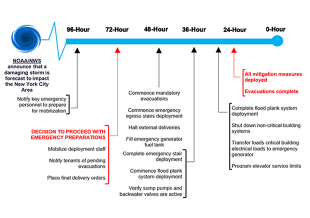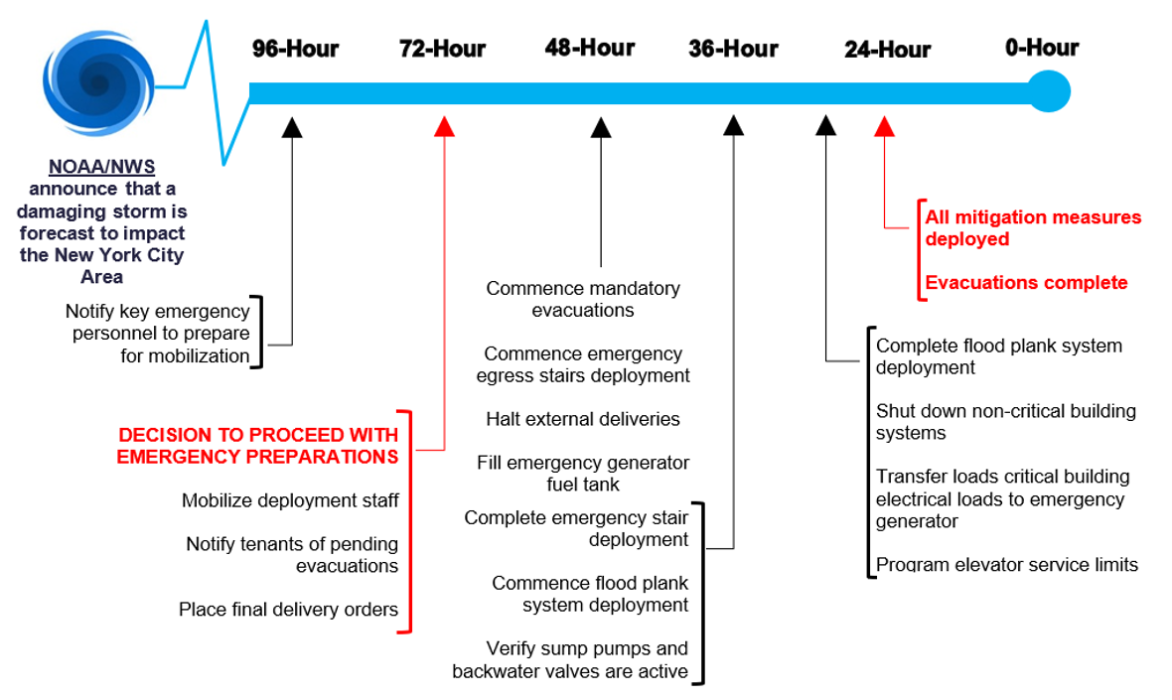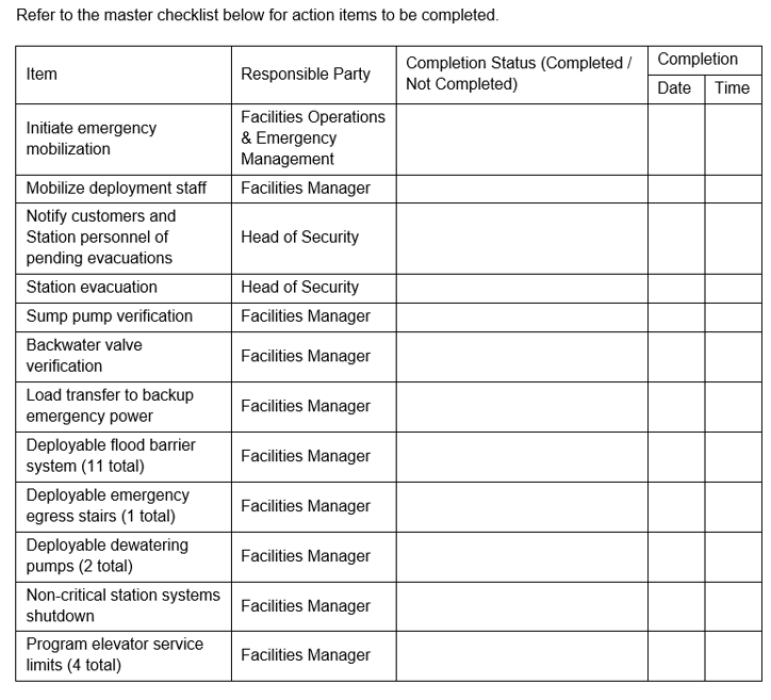News | Stories | Thought Leadership
Climate Action: Emergency Preparedness

 EAP action timeline.
Thornton Tomasetti
EAP action timeline.
Thornton Tomasetti
This week in our continuing series showcasing how engineers and scientists can play a key role in addressing the short- and long-term challenges of climate change, we look at proactive approaches to emergency preparedness. Hurricanes, floods, droughts, winds and other extreme weather events are becoming more frequent and severe and can cause significant and long-lasting damage to communities. Read more on how developing an emergency action plan (EAP) for a building or facility at the start of the design process helps mitigate potential hazards and provides detailed guidelines for ensuring occupant safety and minimizing the impact on business operations.
While it is important to have specific strategies that can be used to help make the built environment more resilient to a changing climate, these strategies are of no use without an actionable plan in place for the end user to operate and maintain prior to a hazardous event. Emergency planning and preparedness may often come as an afterthought when a project is near completion. To account for this, it is crucial to take a proactive approach that incorporates planning, preparedness, operations and maintenance considerations into early project stages.
Building a culture of resilience
Emergency preparedness measures aim to:
- Protect life
- Limit economic losses
- Minimize downtime
- Promote business continuity
Oftentimes, we find there is a lack of emergency action planning during a project’s design phase. This can lead to costly changes, even as late as construction, that can impact the schedule and budget. We work directly with the end users to incorporate their feedback early in the design process and build a culture of resilience within an organization. This helps identify target performance objectives, evaluate any existing operational processes and systems already in place, and ensure that best practices for future crisis and emergency management are being incorporated throughout project implementation.
Business continuity
Operational disruption resulting from major hazardous events is not limited to the physical building and site-related damage but also includes area-wide impacts such as interrupted power, water and transportation systems. We work with our clients to deliver actionable plans that include in-place measures to achieve continuous occupancy or quick post-event functional recovery.
Our emergency preparedness capabilities always aim to optimize energy systems and minimize resource consumption to provide emergency backup utility supplies and enhance sustainability.
At sites such as NYU Langone Health, our team has been working with key personnel on a rolling, annual basis since 2013 to develop a comprehensive flood mitigation strategy with step-by-step implementation guidance that evolves to reflect the campus’s current conditions.
Emergency preparedness
An emergency preparedness plan outlines coordinated actions and procedures designed to mitigate, respond to and recover from potential emergencies or disasters. It is a proactive approach to minimize the impact of various hazards and ensure the safety and well-being of individuals, organizations and communities during crisis situations.
The key elements of emergency preparedness typically include a risk assessment identifying potential hazards and evaluating their likelihood and potential impacts design and implantation of resilience strategies as well as an Emergency Action Plan (EAP), which establishes step-by-step guidelines for immediate actions to be taken prior to, during and immediately after an emergency event.
EAPs detail procedures to facilitate the recovery and restoration of essential services, infrastructure and operations after an emergency and revolve around preparing onsite staff for actions necessary for recovery and response. Specific elements and details of the plan will depend on the nature of the potential emergencies and the needs of the organization or community.
EAPs will typically outline:
- The current overall strategy to mitigate hazards (such as a floodproofing or heat mitigation plan).
- Logistical information and a list of necessary resources required to respond effectively to emergencies (such as personnel, equipment, supplies and facilities).
- Specific measures to mitigate risk ahead of a hazardous event forecast by the National Oceanic and Atmospheric Administration (NOAA).
- Trigger conditions and the timeline (typically 5 days prior in the case of a storm surge event or hours prior to a heavy precipitation event) of actionable items that must be executed to properly protect a site and its occupants from any expected hazards.
- Guidance on implementing ongoing training and education for all site occupants in case of a hazardous event.
- Outline use of back-up energy sources and utility redundancy.
- Detailed strategies for physical deployment of hazard mitigation components (such as flood barriers, dewatering pumps and deployable shading).
- Model evacuation and egress plans.
- Guidance specific to the ongoing maintenance and annual testing of all systems related to hazard mitigation.
Ultimately, emergency preparedness is a key element in expediting the return to full functionality following a hazardous event as well as ensuring life safety and protecting a client’s assets and business operations.
Climate change is one of the biggest challenges facing our society. And because it affects everyone, it demands our creativity, passion and collaboration to build a better, more enduring world. See how Thornton Tomasetti is one of the only firms with the expertise to help you think holistically about a range of steps to address climate change.


